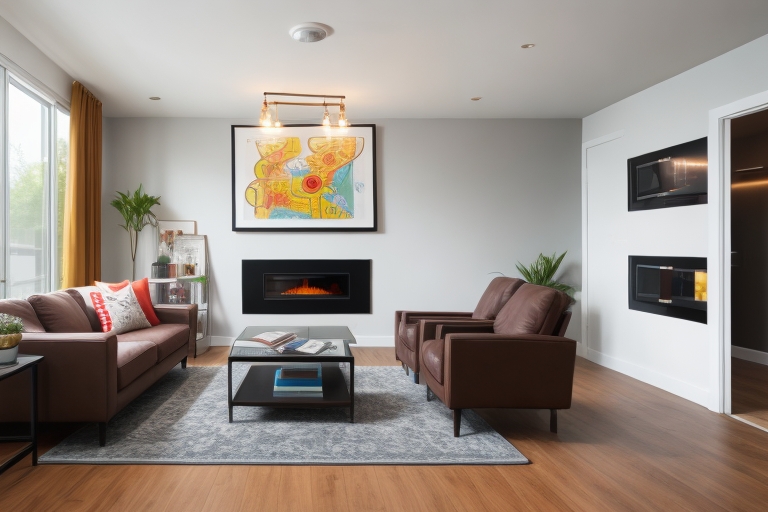Smart Home automation used to be limited to luxury homes, but over the past decade, smart home technology has gone mainstream. With the rise of the Internet of Things (IoT) and voice assistants, average consumers can now automate everything from lighting and climate to security and entertainment in their homes. Implementing Smart Home Automation tech can provide convenience, energy savings, and peace of mind. This comprehensive guide will explore the components of an automated smart home system.
What is Home Automation?
Smart Home Automation refers to using IoT devices, computers and smartphones to remotely monitor and control home systems like:
- Lighting (smart lightbulbs, switches)
- Thermostats and temperature control
- Home theater and entertainment systems
- Security cameras and alarm systems
- Locks and access control
- Garage doors, curtains/shades
- Kitchen appliances, vacuums, yard maintenance
These devices connect via home wireless network protocols like WiFi or Zigbee to apps that allow control from your smartphone, voice assistant, or other interfaces. Automation makes home systems more convenient, energy-efficient, and secure.
Benefits of Smart Home Automation
Why should you automate your home? Key benefits include:
Convenience
Control home devices remotely via app or voice from anywhere. Create scenes like “movie night” to set ambiance with one tap. Automating routine tasks like locking doors or adjusting temperature saves time.
Energy Efficiency
Smart thermostats learn usage patterns and automatically adjust heating/cooling to save power. Smart lighting reduces waste by turning off when not in use. Efficiency benefits the environment and saves money on utility bills.
Security and Monitoring
Security cameras provide real-time feeds while you’re away. Sensors monitor for water leaks, smoke, etc. and trigger alerts. Geo-location turns on lights when you near home or locks doors when you leave to deter burglars.
Accessibility
Those with limited mobility can control doors, lighting, entertainment simply with their voice or smartphone. No more struggling to access hard-to-reach switches. Home automation promotes independent living.
IoT Enabled Devices For Smart Home Automation
The core components of an automated home are Internet of Things connected devices. Here are some of the most popular IoT devices for home automation:
Smart Lighting
Smart lightbulbs like Philips Hue connect to WiFi and allow color, dimming, scheduling, and remote control from apps. Smart switches like Lutron Caseta wirelessly dim/toggle lights.
Smart Thermostats
Nest, Ecobee and Emerson Sensi thermostats learn usage patterns to automatically optimize heating and cooling for comfort and energy savings. Control temperature remotely via app.
Smart Speakers
Amazon Echo, Google Home, and Apple HomePod incorporate voice assistants to control other devices via voice commands. They serve as smart home hubs.
Smart Locks
Keyless smart locks like August and Kwikset allow keyless entry via app and remote locking/unlocking. Some even use fingerprint or facial recognition.
Smart Appliances
Fridges, ovens, vacuums, and other appliances connect to the internet to enable remote control, notifications, and integration with other smart devices.
WiFi Protocols for Connectivity For Smart Home Automation
For an automated home, all devices need reliable wireless connectivity. Smart home devices use the following protocols to communicate:
WiFi
Standard wireless internet protocol connecting computers, smartphones, and some smart devices to home routers. Longer range, higher speeds than other protocols.
Zigbee
Mesh network protocol for smart home/IoT devices focused on low-power, low-bandwidth communication between appliances, sensors, etc. Operates over shorter ranges.
Z-Wave
Another mesh protocol focused on remote control of appliances, lighting, security systems. Lower power, lower cost, but lower speeds than WiFi.
Matter
Emerging IoT protocol designed to unify smart home device communication across brands for interoperability. Backed by industry groups including Google, Apple, and Amazon.
Many smart hubs, routers, and devices support multiple protocols to ensure whole home connectivity.
Hubs for Device Coordination For Smart Home Automation
To integrate all devices into one automated system, smart homes need central hubs:
Control Hubs
Central hardware hubs like Samsung SmartThings, Wink Hub, and Revolv act as the brain linking and coordinating connected devices via cloud integration.
Voice Assistants
Smart speakers with Amazon Alexa or Google Assistant provide voice control. Act as hubs when linked to devices via their apps.
Home Entertainment Hubs For Smart Home Automation
Apple TVs, smart TVs, and game consoles like Xbox One allow device control and serve as hubs when set up with compatible apps.
Hubs facilitate whole home scene creation, automation based on triggers like motion sensors, voice control, and remote access. Choose an expandable hub platform that works with your preferred devices and apps.
Smart Home Apps for Smart Home Automation
User-friendly apps allow you to monitor, control, and automate your home from a smartphone or tablet. Here are some top options:
- Hub Controller Apps – Work with specific hubs like SmartThings, Wink, Apple HomeKit. Created by hub manufacturers.
- Voice Assistant Apps – Control devices via Alexa, Google Assistant. Available from Amazon and Google.
- Device-Specific Apps – App created by individual device brand like Philips Hue lights or Ecobee thermostat. Control single device.
- Multi-device Apps – Third-party apps like IFTTT and Yonomi integrate multiple devices and triggers for easy automation.
Evaluate app costs, device compatibility, reviews, and ease of use when selecting apps for your smart home needs.
Best Practices for Installation and Setup For Smart Home Automation
Ready to get your smart home up and running? Follow these best practices:
- Start with a strong wireless router and consider adding WiFi extenders or mesh networks to ensure whole home connectivity.
- Choose an expandable, future-proof hub platform that integrates well with your planned devices and phone OS.
- Focus first on automating key utilities like lighting, temperature, and security. Prioritize convenience and energy savings.
- Slowly expand your system. Consider doing one room at a time focusing on your needs in each space.
- Run apps and test device connectivity before permanently mounting and wiring devices.
- Name and group devices thoughtfully in hub apps for easy centralized control.
Home automation systems require an upfront investment but pay off through enhanced convenience, savings, and peace of mind. Proper setup will keep your system running smoothly for years.
Automating for Efficiency and Comfort
Once setup is complete, having full control over your home environment is at your fingertips. Here are smart ways to use automation:
Schedules
Program thermostats, lighting, and appliances to match usage patterns. Only heat or cool unused rooms when needed.
Triggers and Routines
Set lights to turn on at sunset. Lock doors when everyone leaves. Launch movie night scene with one tap.
Notifications
Receive alerts about open garage doors, running appliances, smoke alarms, unusual activity caught on cameras and more.
Remote Access
Control and monitor home systems from anywhere via smartphone. Great for pet monitoring, adjusting temperature when away, etc.
Take full advantage of the possibilities of home automation for maximum efficiency, comfort, and security.
The Future of Smart Home Automation Technology
Smart Home Automation systems continue getting more advanced through cutting-edge innovations in AI and IoT. The future may hold:
- Next-gen voice assistants that understand context and have two-way conversations
- Appliances that self-diagnose issues and even automatically order replacements
- Robotic helpers that respond to voice commands to clean or fetch items
- Immersive smart entertainment like projectors and tactile feedback
As Smart Home Automation tech evolves, automation will fade into the background making our homes respond intuitively to our needs for ultimate convenience. Smaller companies like Kojyon can take advantage of these innovations in AI and IoT to develop cutting-edge home automation apps and devices. Are you excited about the future possibilities of automated living?















